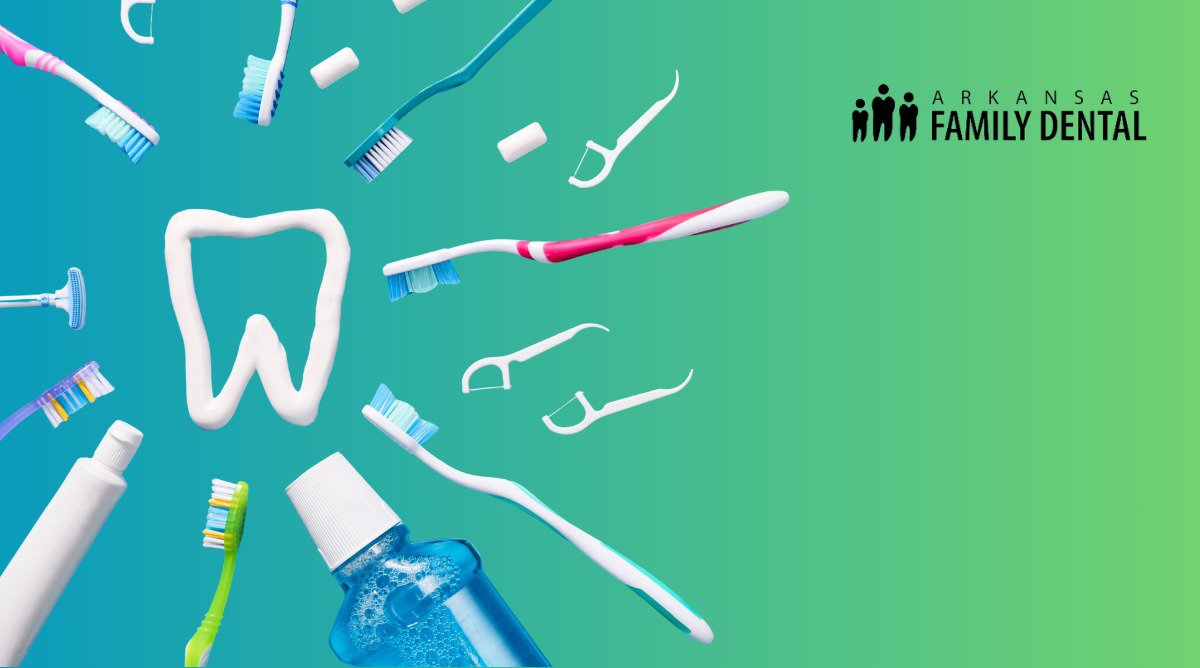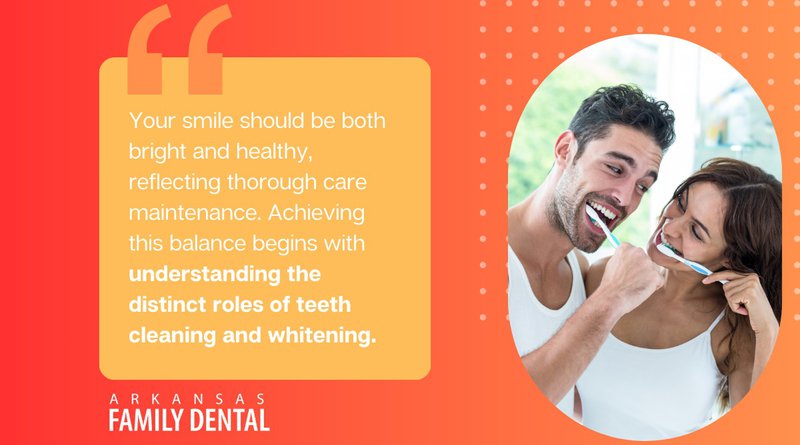Teeth Cleaning vs Whitening: Which Should Come First?

August 28, 2025
If you want a brighter smile, understanding the difference between teeth cleaning vs whitening is essential. One supports your oral health, while the other enhances appearance. Choosing which to prioritize depends on your dental condition, goals, and schedule. Let’s determine what your smile needs—without wasting time or money.
Key Takeaways:
- Teeth cleaning removes plaque and tartar to prevent gum disease, decay, and bad breath; usually recommended every six months and is often covered by insurance.
- Teeth whitening lightens teeth four to eight shades using bleaching agents like hydrogen peroxide; it’s cosmetic and typically isn’t covered by insurance.
- Cleanings involve exams, scaling, polishing, flossing, and sometimes fluoride; deep cleanings remove buildup below the gumline to treat gum disease.
- Whitening works best on a healthy mouth, and is done in-office or with take-home kits; results last about a year with proper care.
- Whitening is most effective after cleaning; plaque/tartar can block bleaching agents.
- Risks: Cleanings may lead to sore gums; whitening can cause tooth sensitivity or minor gum irritation.
- Cleanings support oral health; whitening improves appearance and confidence.
- Cost: Cleaning ranges from $75–$200; whitening can cost $300–$1,000.

Fundamental Differences Between Teeth Cleaning vs Whitening
Understanding teeth cleaning vs whitening is essential for making informed decisions about dental care. Teeth cleaning is crucial for maintaining oral health, while teeth whitening enhances the appearance of your smile. Here’s a breakdown of their purposes:
Main Purpose of Dental Cleaning vs Whitening
- Teeth Cleaning: Focuses on removing plaque and tartar to prevent gum disease, cavities, and bad breath. Regular cleanings are vital for oral health.
- Teeth Whitening: Aims to brighten your smile by removing stains from food, drinks, or smoking. Best suited for healthy teeth that appear dull or yellow.
A professional hygienist uses specialized tools during cleaning that brushing at home cannot replace. For more details, visit Arkansas Family Dental.
Oral Health Goals vs Cosmetic Goals
- Oral Health Goals: Protect the body by preventing disease and tooth loss. Cleanings act like maintaining a house’s structure.
- Cosmetic Goals: Enhance smile aesthetics and boost confidence. Whitening acts like painting the walls.
Whitening gels are most effective when applied to clean enamel, highlighting the importance of scheduling cleanings first, which enhances the effectiveness of teeth whitening. By removing plaque and tartar, cleanings ensure the whitening gel adheres better to the enamel, leading to brighter results. Prioritizing oral health supports both functionality and aesthetics.
Importance of Not Confusing Procedures
Confusing these procedures can lead to gum disease or tooth decay. Whitening cannot penetrate plaque or tartar effectively, underscoring the need for cleanings as a precursor.
What Happens During a Professional Teeth Cleaning vs Whitening
Professional Teeth Cleaning Process
Professional teeth cleaning involves three main stages:
- Initial Checkup: Examination of teeth and gums to identify potential issues.
- Scaling: Removal of plaque and tartar using specialized tools, especially around gums.
- Polishing and Flossing: Buffs enamel and clears debris between teeth. Often concludes with a fluoride application for decay prevention.
Deep cleanings differ by going below the gumline to treat gum disease, often involving local numbing.
Regular cleanings help prevent cavities, gum issues, and bad breath while detecting early signs of oral health problems.
Expectations Before, During, and After Teeth Whitening
In-Office Whitening Procedures Involve:
- Health Check: Examination to ensure gums and teeth are suitable for whitening.
- Application of Whitening Gel: Use of hydrogen peroxide gel, sometimes activated by light or heat, to brighten teeth by 4 to 8 shades.
Common whitening agents, like hydrogen peroxide, work by breaking down internal stains, while aftercare includes avoiding stain-causing foods and using whitening toothpaste. Proper care can extend results up to a year. Explore options at Arkansas Family Dental.
How Often Should You Get Professional Teeth Cleaning vs Whitening?
How Often Do Dentists Recommend Teeth Cleanings?
Every six months is standard for maintaining healthy teeth and preventing tartar buildup. Regular visits help identify any hidden problems early. Some patients, especially those with gum issues or braces, may require more frequent check-ups. Always adhere to your dentist’s advice.
How Often Should You Whiten Your Teeth?
Typically, once or twice a year is sufficient. Excessive whitening can cause sensitivity or enamel erosion. For individuals consuming staining substances like coffee or tobacco, more frequent touch-ups might be necessary. Whitening is most effective following a professional cleaning.
Can You Do Both on the Same Day?
Yes. Clean your teeth first, then whiten them. This sequence helps the whitening gel adhere better to the clean enamel.
Benefits and Limitations of Teeth Cleaning vs Whitening
How Do Cleanings Prevent Dental Diseases?
Cleaning effectively removes plaque and tartar, crucial for preventing gum disease and cavities. Tartar buildup can’t be removed by brushing alone. Regular cleanings also provide an opportunity for dentists to check for broader health issues.
What Self-Esteem Benefits Result from Whitening?
Teeth whitening can significantly enhance self-esteem by creating a brighter smile. This boost in confidence often encourages better oral hygiene habits at home. Many choose whitening before significant events or photographs.
Are There Risks or Discomforts Linked to Either Procedure?
Mild soreness might occur post-cleaning, especially if there are pre-existing gum issues. Whitening can lead to short-term sensitivity and minor gum irritation. Professional dental offices use protective measures, unlike some at-home kits, which may cause uneven results.
Cost Factors and Insurance Considerations for Teeth Cleaning vs Whitening
How Much Do Teeth Cleaning and Whitening Usually Cost?
Teeth cleaning ranges from $75 to $200. Whitening can cost between $300 and $1,000. Cleanings are typically less expensive as they are essential for dental health.
What Dental Services Are Typically Covered by Insurance?
Most insurance policies cover cleanings, usually two annually. Some plans also cover deep cleanings if gum treatment is required. Whitening is often not covered, as it is considered cosmetic. Patients should inquire about payment plans or discounts with their dentist.
Expected Results from Teeth Cleaning vs Whitening
Does a Cleaning Make Teeth Visibly Whiter?
Cleaning primarily removes buildup and surface stains, often resulting in a slightly brighter appearance. However, it does not change the natural color of enamel.
What Level of Brightness Can a Whitening Treatment Achieve?
Whitening can lighten teeth by 5 to 8 shades, particularly with professional in-office treatments. These procedures tackle deep-set stains, while prior cleaning ensures even application.
To see options, visit Arkansas Family Dental’s Laser Teeth Whitening Benefits.
Proper expectations should be set using before-and-after images, which dentists can provide, alongside shade charts to measure progress. The biggest color change typically comes from whitening, with clean teeth enhancing the results.
Who Should Consider Teeth Cleaning vs Whitening or Both?
If gums bleed during brushing, consider a deep cleaning. Bleeding, bad breath, or loose teeth may indicate a deeper issue. In such cases, root scaling and gum treatment are the priority. Deep cleanings remove bacteria below the gumline, with numbing to ensure comfort during the procedure.
Can You Whiten Teeth After Cleaning?
Yes. For brighter, more even results, clean teeth first, as plaque can hinder whitening effectiveness. Many choose whitening for special events, with cleaning and whitening often performed on the same day if no issues are found.
When Should You Whiten Teeth?
Whitening is beneficial for healthy teeth stained by food or drinks. Yellowing from coffee or smoking is common, with in-office results quicker and more noticeable compared to store-bought strips. If teeth are hurting or gums are inflamed, treat these issues first before considering whitening. For more details, visit Arkansas Family Dental.
What’s Best: Teeth Cleaning, Whitening, or Both?
Your needs dictate the best approach. Sore gums require cleaning. Healthy but dull teeth may benefit from whitening. Most people gain from both: clean for health, whiten for aesthetics. If unsure, consult Arkansas Family Dental for guidance.
What Are the Safest and Most Effective Methods for Teeth Cleaning vs Whitening?
Is Teeth Whitening Safe?
Yes—whitening is safe when done correctly after thorough cleaning. Whitening gels work best on plaque-free teeth. In-office treatments offer greater safety, with dentists supervising the process and protecting gums.
Are There Risks to Enamel During Teeth Cleaning vs Whitening?
Minimizing risks involves avoiding overuse. Cleanings are safe and support enamel health by polishing surfaces and reducing plaque. Whitening may temporarily weaken enamel, but professional products help restore strength. Dentists often apply fluoride post-whitening.
Considerations for Braces, Fillings, or Gum Issues
Dentists can accommodate these conditions. Whitening does not alter the color of crowns or metal. A dental checkup ensures the right approach, and options are available for sensitive teeth. For a personalized plan, clean first, then collaborate with your dentist on a whitening method that fits.
Ensure a bright and healthy smile by finding a balance between cleaning and whitening.
Get Your Radiant Smile with Arkansas Family Dental
Your smile should be both bright and healthy, reflecting thorough care and thoughtful maintenance. Achieving this balance begins with understanding the distinct roles of teeth cleaning and whitening. Cleaning, the cornerstone of oral health, removes plaque and tartar to prevent gum disease and cavities, supporting overall dental hygiene. On the other hand, whitening enhances the aesthetic appeal, boosting confidence and leaving a lasting impression. It's vital not to rush this process—focus on regular cleanings to maintain health, and choose whitening when you're ready for that extra sparkle.
Together, they ensure your dental well-being and visual allure are in harmony. To learn more about how to enhance your smile with professional care, reach out to Arkansas Family Dental today for personalized advice and appointments. Visit our website or contact us directly to discuss your dental needs.
Connect With
Call (501) 232-6273 or request an appointment online to set up your first visit. We’ll be in touch soon.
